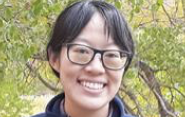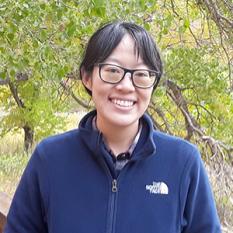Diana Qiu Wins DoE, NSF Grants for Excitons Research

For projects that aim to get a better understanding of excitons, Prof. Diana Qiu has won grants from the U.S. Department of Energy (DOE) and the National Science Foundation (NSF).
 For her proposal to develop ways to better predict the behavior of excitons - a critical step to developing more efficient solar cells and faster optoelectronic devices - the DOE awarded Qiu a 5-year, $750,000 grant. The grant is part of the DoE’s Early Career Research Program, which supports exceptional scientists during the crucial years when many do their most formative work in the agency’s priority research areas. The awards are part of DOE’s longstanding efforts to support important research at the nation’s universities and National Labs.
For her proposal to develop ways to better predict the behavior of excitons - a critical step to developing more efficient solar cells and faster optoelectronic devices - the DOE awarded Qiu a 5-year, $750,000 grant. The grant is part of the DoE’s Early Career Research Program, which supports exceptional scientists during the crucial years when many do their most formative work in the agency’s priority research areas. The awards are part of DOE’s longstanding efforts to support important research at the nation’s universities and National Labs.
Qiu, assistant professor of mechanical engineering & materials science, will use the grant to get a better understanding of the workings of excitons. An exciton is the combination of an electron and a hole, which is a positively charged empty state caused by the absence of an electron. Because of their opposite charges, they create a bound system known as an exciton.
“It’s important for energy because every time we shine a light on a material, like a photocatalyst or photovoltaics, this creates an exciton,” said Qiu, a member of the Energy Sciences Institute on Yale's West Campus. “So to determine how much energy you can extract from a system or how much current you can expect from a photovoltaic device, you need to look at how the exciton moves through the material after it’s been excited.”
The study of how excitons move is still in the very early stages. Qiu’s project is aimed at developing new methods for looking at exciton movement through materials. She hopes to simulate experiments in which experimentalists shine light on a material to see how the system evolves in space and in time. This would provide very realistic images of the excitons, as well as give a sense of the duration of the exciton’s initial state, in which it maintains the quantum information of the initial excitation.
Such simulations weren’t possible in the recent past due to a lack of theory and computational tools. The calculations that Qiu’s project requires would take over a million hours on the typical laptop computer. Her lab works with a few different supercomputers, including one on Yale’s West Campus, where her lab is, and another at Tennessee’s Oak Ridge National Laboratory, currently listed as the second fastest computer in the world.
Qiu’s work with excitons garnered another recent award, this one from the NSF’s Division of Materials Research. For this grant, she’ll be studying excitons’ effect on x-ray absorption spectra. X-ray absorption is typically a very powerful tool for exploring the structure of materials, but it’s a very complicated process: a very high-energy x-ray takes a very low-energy electron and excites it to become high-energy. There’s also a similar interaction between a high-energy electron and a hole.
“I’m interested in looking at what the different pathways are that the high-energy electron can take before it recombines with the hole, because eventually, it’s going to decay and go back to its original state,” she said. “It’s developing methods to describe all the various decay channels, but this will give us a deeper understanding of what’s going on in x-ray absorption experiments, so we can better interpret the experiments.”

